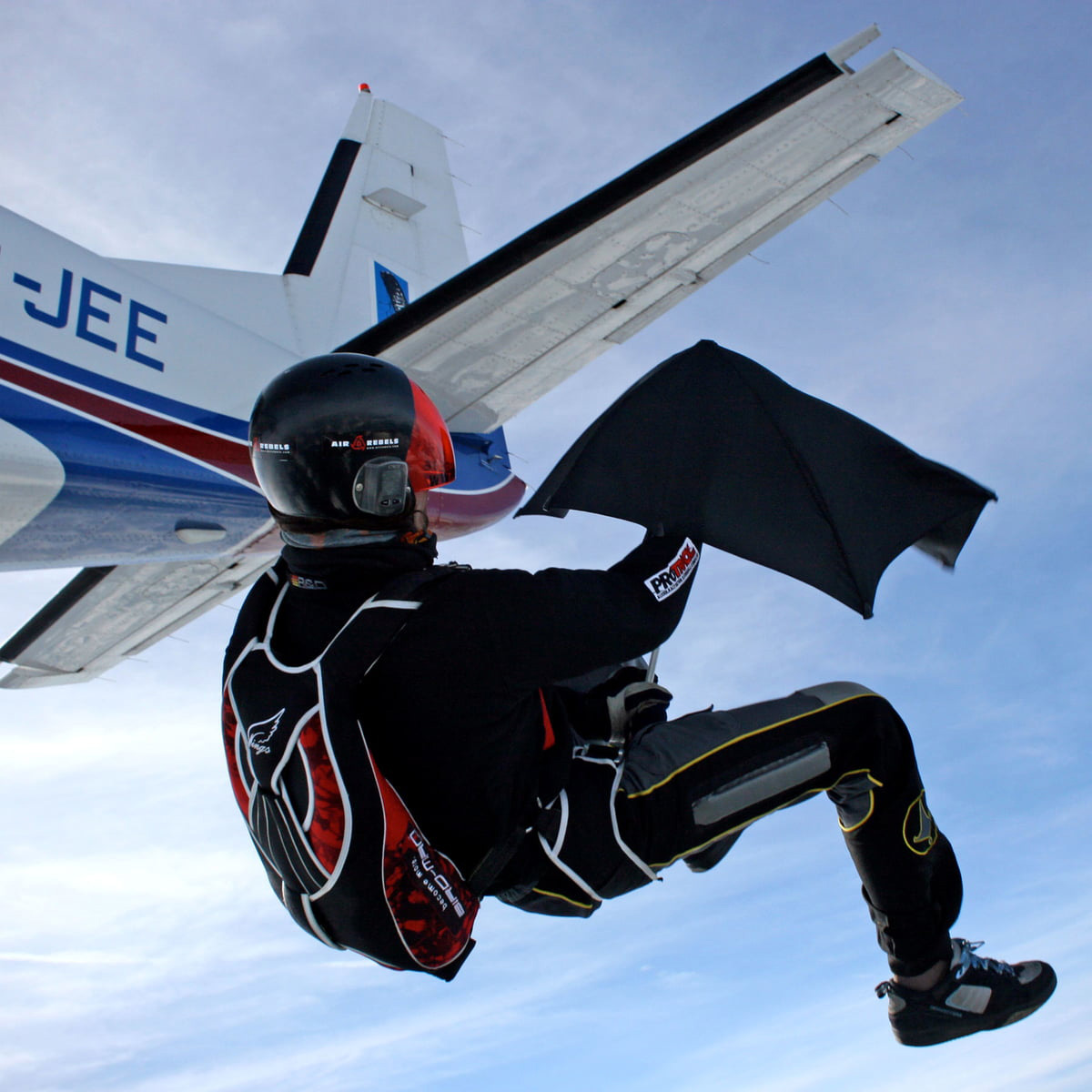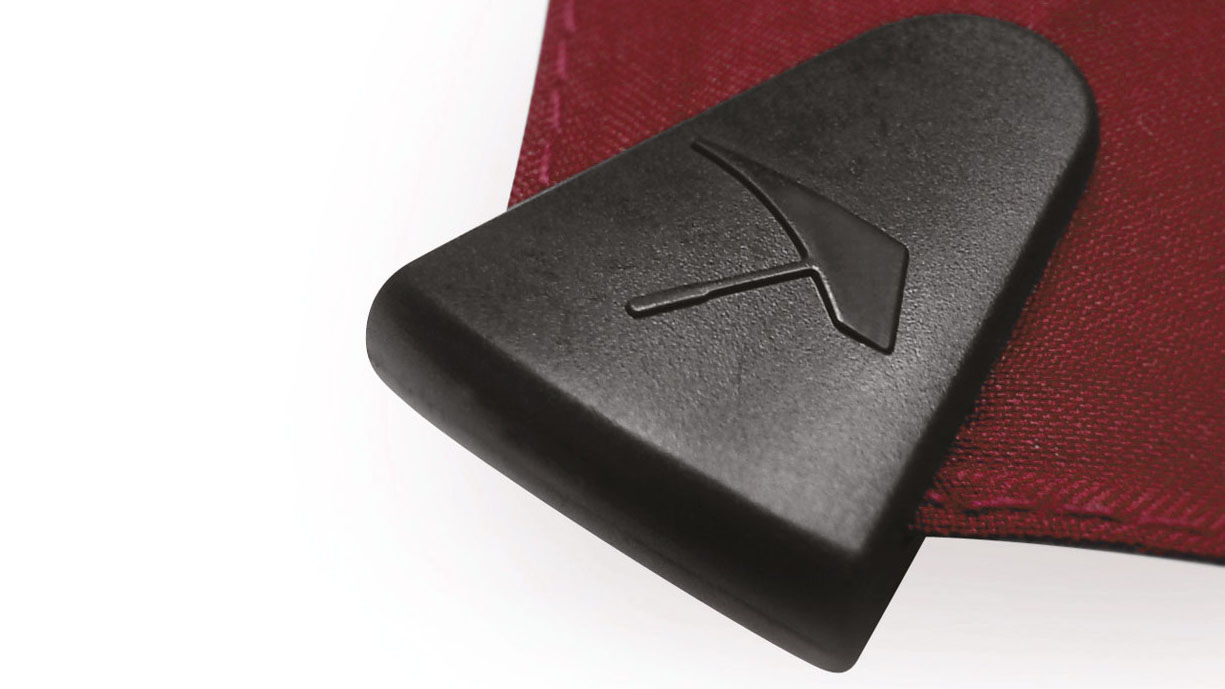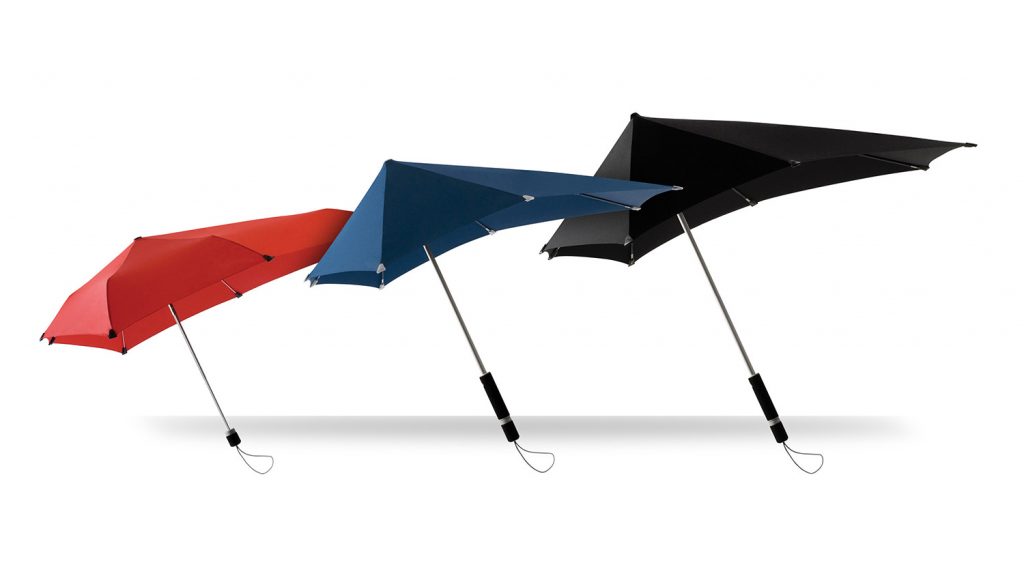As the interview ends, the designer of Senz umbrellas Gerwin Hoogendoorn, makes the observation that traditional stormproof umbrellas show their pedigree with a stamp that shows an umbrella bent inside out.
“It’s really strange,” he points out. “Volvo make really safe cars but they don’t advertise with an icon of the car’s front wrapped around a tree.”
He’s quite right, and in turn Senz doesn’t feel it needs to promote its products in such a negative way. Instead, it has based its entire business on a core design principle that means all of its products should be capable of withstanding strong winds, some up to 70mph.

Tired of the age-old problem of a sudden gust disabling his means of shelter Hoogendoorn took it as his inspiration for his final project at the Delft University of Technology, Holland.
“Originally I was so frustrated with the umbrella so as an industrial designer I thought ‘that’s a nice challenge’,” says Hoogendoorn.
“I could design a nicer coffee machine, but it’s more valuable to solve a problem that a lot of people recognise.”
The end product may resemble a stealth bomber on a stick, but its carefully calculated lines and asymmetrical design channel the air flow giving it the perfect position against the wind. Adapting to all conditions, the stronger the wind rises the more stable its stance seems.
This was the work of hours spent creating test shapes by hand and in CAD.
“I generated a lot of sketches, first of all I started with a product design specification then it’s really easy to get rid of the not so good designs. Then from the few remaining designs I made prototypes.”
Hoogendoorn stresses the tricky nature of umbrella design, practically unchanged since ancient Egyptians and Greeks used parasols for shade.
This lack of evolution offered Hoogendoorn little direction to follow, leading to numerous physical prototypes being shackled together from the skeletons of traditional brollies before a CAD model could even be conceptualised.

Using his university’s suite of Solidworks, he engineered individual components such as the locking mechanism.
“With normal umbrellas you always see the locking mechanism and that’s very ugly and dangerous sometimes, so I wanted to hide it. I wanted to engineer a handle that the locking system was contained in.”
Physical testing ensued once models had been constructed, with Hoogendoorn often seen standing at the top of the tallest building on campus grimly holding on to one of his creations battling the wind. Having left university intact he set up the company with his colleagues Gerard Kool and Phiilip Hess to bring the umbrella to market.
Very early on they invested in technology as a cheaper way to create and test concepts faster. Choosing SpaceClaim, they were able to develop model parts such as the ‘eye-savers’ – which help protect the eyes of fellow pedestrians by covering the umbrella’s spokes – and the folding mechanism.
“We went for SpaceClaim because it doesn’t have a history tree; very nice for us as it speeds up the process,” says Hoogendoorn. “It’s intuitive and we don’t need all of the complex features – for us it is the perfect choice.”
Blowin’ in the wind
For testing under wind loading, CFD (Computational Fluid Dynamics) became part of the rigorous prototyping process, but also a way of evaluating new ideas quickly.
“Right after we started up the company we started using CFD, so with all three models we do practical testing, wind-tunnel testing and CFD testing. With the three together we think we have a good system to design the right umbrella.
“For new designs it is a cheaper and quicker way to get a first impression,” exclaims Hoogendoorn, revealing that their creations are put through their paces by Actiflow, an aerodynamics specialist based in Delft, that also works closely with Ferrari to harness the wind underflow on its new cars.
Through its collaboration with Actiflow, Senz can change its models at will, whereas a physical prototype in a high-speed wind tunnel is susceptible to breaking if not well constructed.
To help withstand the high-pressures generated by such strong winds Senz umbrellas have tweaks to their design that improve strength and aid practicality.
“We have the patented rib construction,” indicates Hoogendoorn, displaying the underside of the umbrella.
“With normal umbrella ribs, the lower rib goes to the upper rib, and where it is connected with the hinge it will always break. Underneath the rib we connected the end of the lower rib – both ribs will bend if there is pressure on them.”
Second wind
The foldable Senz Mini is different to its larger counterparts but is still well thought out. Capable of withstanding 40mph winds, the model still posed problems due to its collapsible form.

“People don’t tend to know how windy it is, and the Mini has a maximum it can take. In practise we had some warranty cases where the Mini failed,” says Hoogendoorn.
To counter this Senz took the damaged Minis and fed the break information into the software, the results led to a new design and a new stronger shaft for the improved umbrella.
The shape of Senz umbrellas have other less obvious practicalities. They allow for better vision than traditional umbrellas and compared to ordinary umbrellas of the same size causes 40 per cent less muscle tension in the users shoulder, making it much easier to hold.
Yet it is the solution to the conventional problem of the wind-inverted umbrella that makes the original Senz umbrella so notable. Being able to withstand high winds is incredible, however a force 10 gale is hopefully something very few of us should experience this summer.






